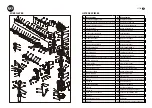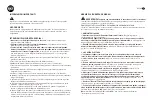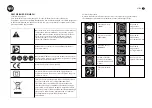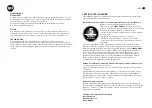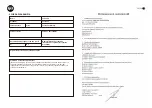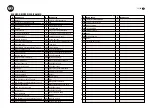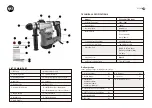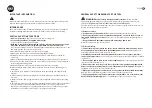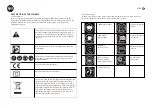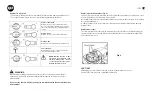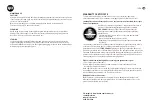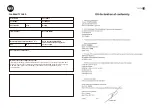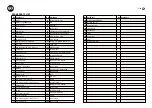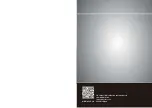
GB
65 66
|
3) Personal safety
a)
Stay alert, watch what you are doing and use common sense when operating a
power tool. Do not use a power tool while you are tired or under the influence of
drugs, alcohol or medication.
A moment of inattention while operating power tools may
result in serious personal injury.
b)
Use personal protective equipment. Always wear eye protection.
Protective
equipment such as dust mask, non-skid safety shoes, hard hat, or hearing protection used for
appropriate conditions will reduce personal injuries.
c)
Prevent unintentional starting. Ensure the switch is in the off position before
connecting to power source and /or battery pack, picking up or carrying the tool.
Carrying power tools with your finger on the switch or energising power tools that have the
switch on invites accidents.
d)
Remove any adjusting key or wrench before turning the power tool on.
A wrench or
a key left attached to a rotating part of the power tool may result in personal injury.
e)
Do not overreach. Keep proper footing and balance at all times.
This enables better
control of the power tool in unexpected situations.
f)
Dress properly. Do not wear loose clothing or jewellery. Keep your hair, clothing
and gloves away from moving parts.
Loose clothes, jewellery or long hair can be caught
in moving parts.
g)
If devices are provided for the connection of dust extraction and collection facilities,
ensure these are connected and properly used.
Use of these devices can reduce dust
related hazards.
4) Power tool use and care
a)
Do not force the power tool. Use the correct power for your application.
The correct
power tool will do the job better and safer at the rate for which it was designed.
b)
Do not use the power tool if the switch does not turn it on and off.
Any power tool
that cannot be controlled with the switch is dangerous and must be repaired.
c)
Disconnect the plug from the power source and/or the battery pack from the power
tool before making any adjustments, changing accessories, or storing power tools.
Such preventive safety measures reduce the risk of starting the power tool accidentally.
d)
Store idle power tools out of the reach of children and do not allow persons
unfamiliar with the power tool or these instructions to operate the power tool.
Power tools are dangerous in the hands of untrained users.
e)
Maintain power tools. Check for misalignment or binding of moving parts,
breakage of parts and any other condition that may affect the power tools operation.
If damaged, have the power tool repaired before use.
Many accidents are caused by
poorly maintained power tools.
f)
Keep cutting tools sharp and clean.
Properly maintained cutting tools with sharp
cutting edges are less likely to bind and are easier to control.
g)
Use the power tool, accessories and tool bits etc. in accordance with these
instructions, taking into account the working conditions and the work to be performed.
Use of the power tool for operations different from intended could result in a hazardous
situation.
5) Service
a)
Have your power tool serviced by qualified repair person using only identical
replacement parts.
This will ensure that the safety of the power tool is maintained.
NOISE/VIBRATION INFORMATION
Measured sound values determined according to EN 60745-1.
Wear hearing protection!
Vibration total values (triax vector sum) determined according to EN 60745-1: The vibration
emission level given in this information sheet has been measured in accordance with a
standardized test given in EN 60745-1 and may be used to compare one tool with another.
It may be used for a preliminary assessment of exposure. The declared vibration emission
level represents the main applications of the tool. However if the tool is used for different
applications, with different accessories or poorly maintained, the vibration emission may
differ. This may significantly increase the exposure level over the total working period. An
estimation of the level of exposure to vibration should also take into account the times when
the tool is switched off or when it is running but not actually doing the job. This may
significantly reduce the exposure level over the total working period. Identify additional
safety measures to protect the operator from the effects of vibration such as: maintain the
tool and the accessories, keep the hands warm, organization of work patterns.

